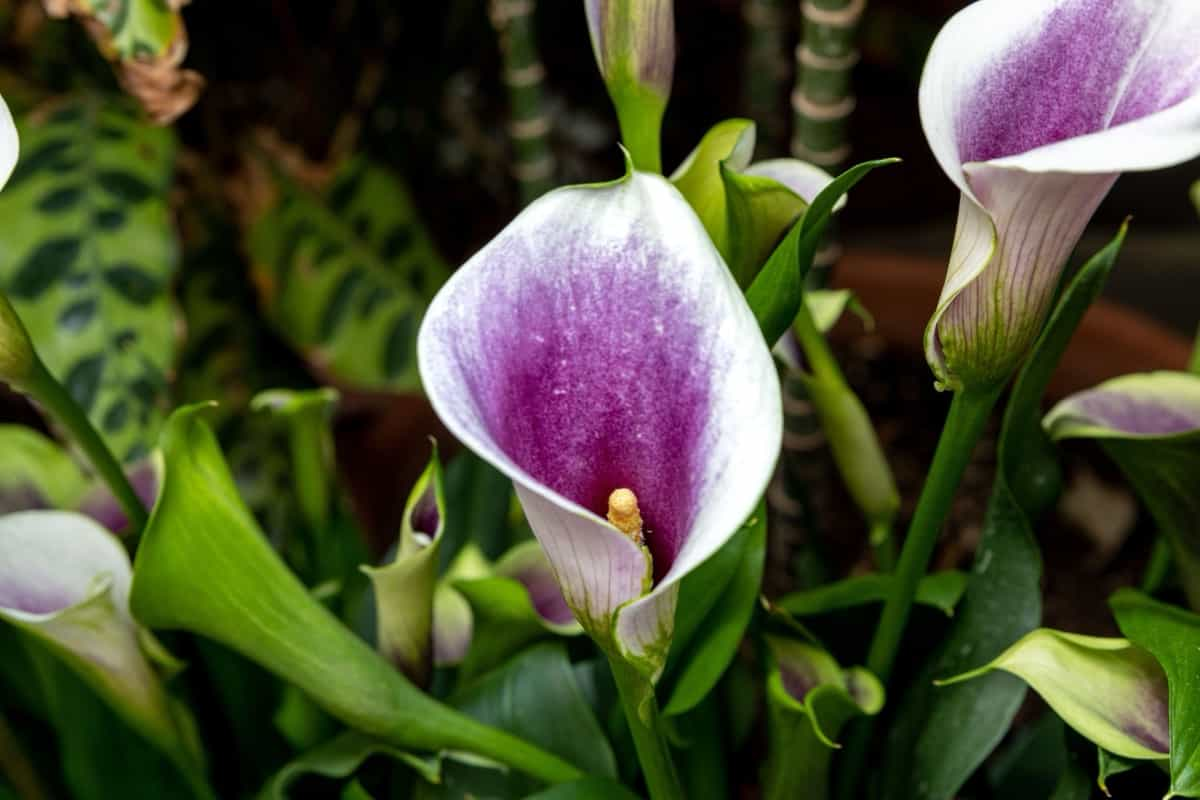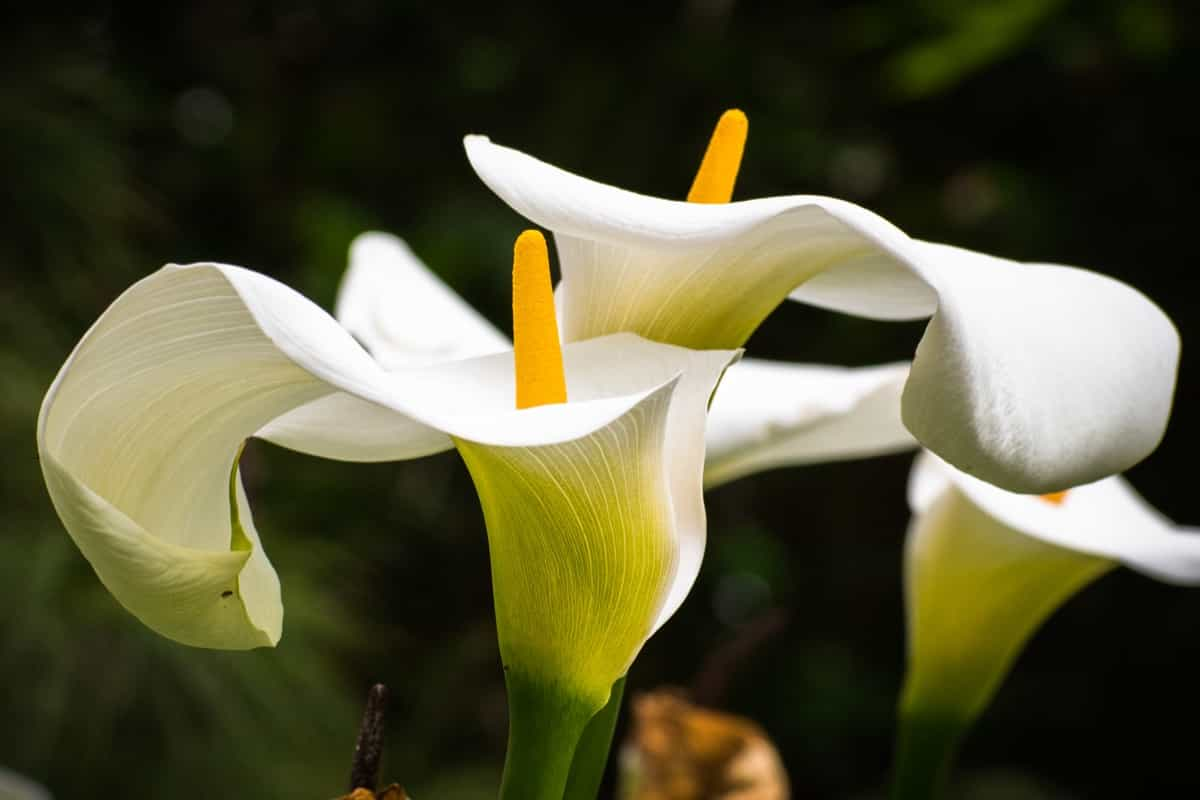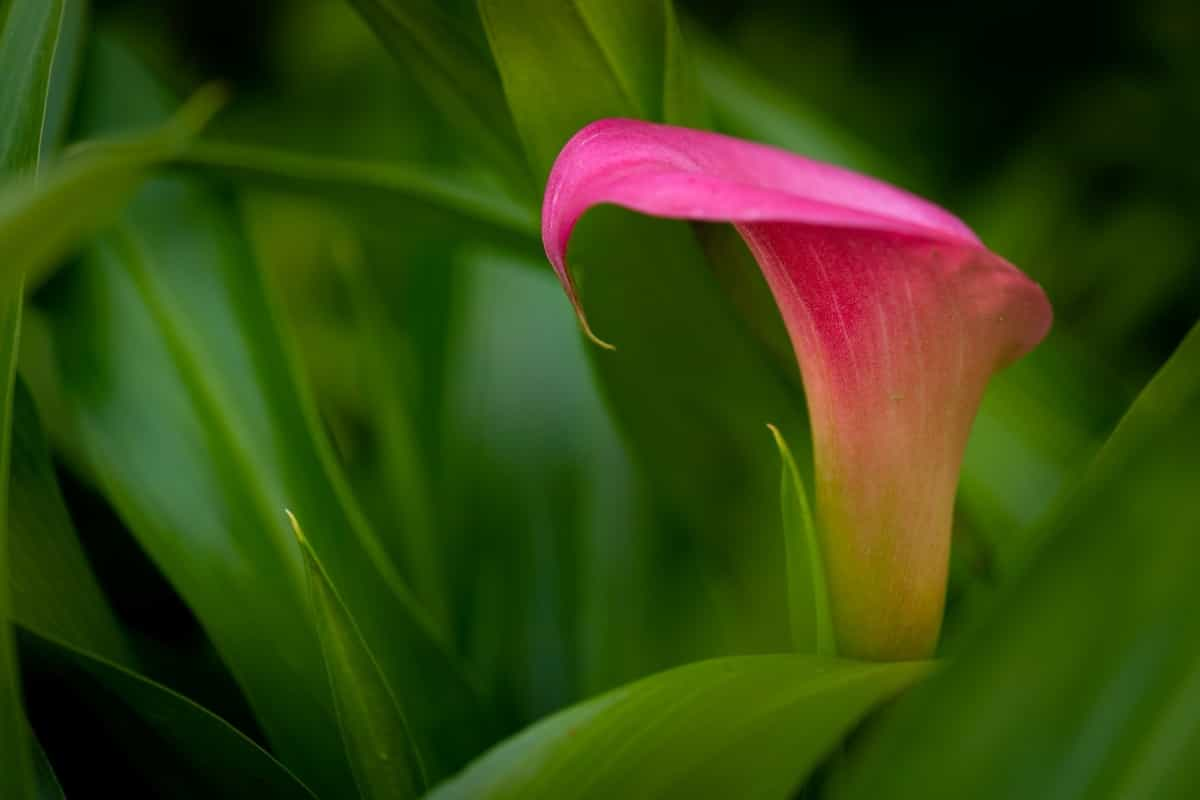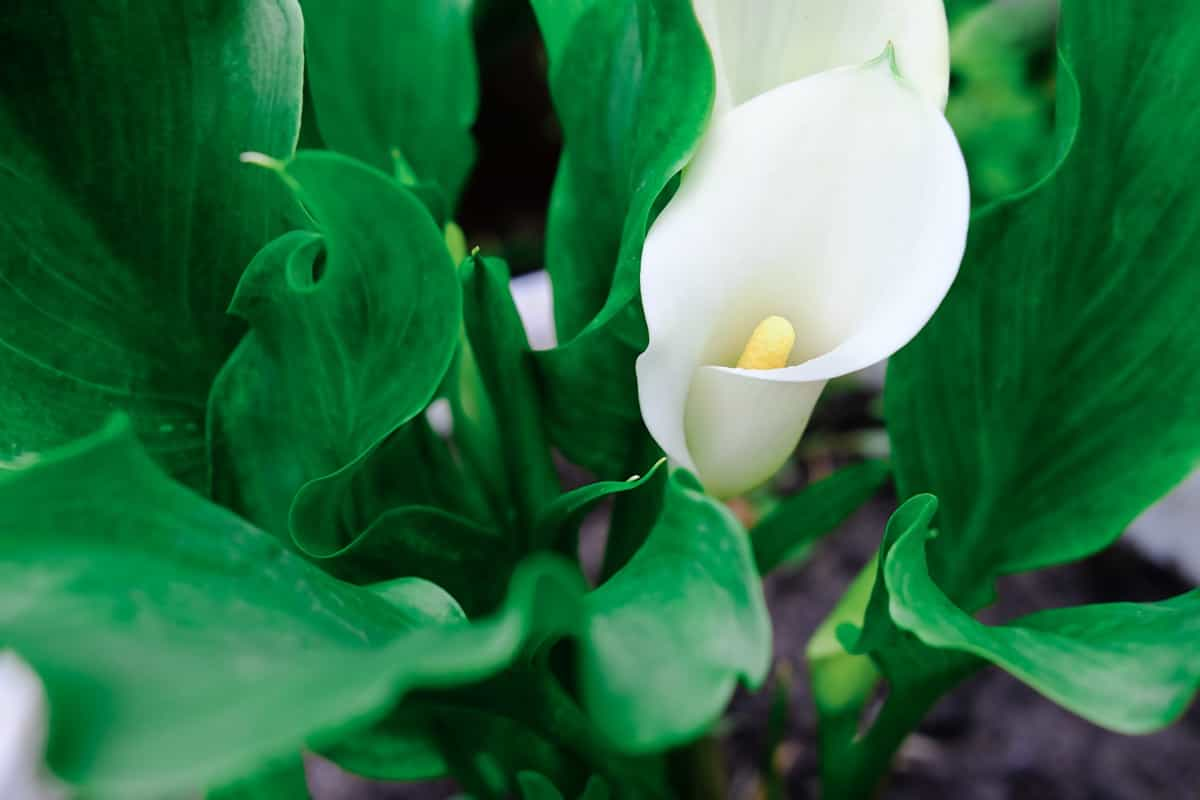Calla lilies, belonging to the genus Zantedeschia, are elegant flowering plants known for their trumpet-shaped blooms and long, sword-shaped foliage. They are available in various colors, including white, yellow, burgundy, rose, pink, and orange, and are popular for weddings, borders, and containers. Calla lilies are perennials and can be grown in Zones 8-10, with hybrids being more comfortable in Zone 9 and warmer.

Common Calla Lily Leaf and Flower-Related Problems
Calla lilies, while relatively easy to grow, can encounter a few common problems related to their leaves and flowers. Some of the most common issues include leaf yellowing, leaf curling, flower bud drop, petal blight, leaf spots, flower discoloration, leaf chlorosis, petal wilting, leaf mottling, and flower fading.
Leaf Yellowing
One common issue with calla lilies is leaf yellowing, which is often caused by overwatering. These plants prefer moist, well-drained soil, but soggy conditions can lead to root rot, which manifests as yellowing or wilting leaves.
Leaf Curling
Another issue is leaf curling, which can be caused by various factors like pests, diseases, or environmental stress. Proper care and maintenance, including adequate watering and pest control, can help prevent leaf curling in calla lilies.
Flower Bud Drop
Calla lilies may experience flower bud drop, which can be attributed to environmental stress, inadequate watering, or nutrient deficiencies. Proper care and maintenance, including providing the right growing conditions, can help prevent flower bud drop.
Petal Blight
Petal blight is a common problem that affects calla lily flowers. It is often caused by fungal infections and can lead to browning and wilting of petals. Proper air circulation and avoiding overhead watering can help prevent petal blight in calla lilies.
In case you missed it: Top 10 Homemade Sprays for Lily Beetles: Get Rid of These with DIY Organic Treatment

Leaf Spots
Leaf spots, which manifest as discolored or dark spots on the foliage, can be caused by fungal or bacterial infections. Proper sanitation and avoiding overhead watering can help prevent leaf spots in calla lilies.
Flower Discoloration
Environmental stress, nutrient deficiencies, or fungal infections can cause flower discoloration in calla lilies. Proper care, including adequate fertilization and pest control, can help prevent this.
Leaf Chlorosis
Leaf chlorosis, characterized by yellowing or whitening of the leaves, can be caused by nutrient deficiencies, improper pH levels, or environmental stress. Proper fertilization and soil management can help prevent leaf chlorosis in calla lilies.
Petal Wilting
Inadequate watering, high temperatures, or fungal infections can cause petal wilting in calla lilies. Proper watering and providing adequate shade during hot weather can help prevent this.
Leaf Mottling
Leaf mottling, which appears as irregular patterns or discoloration on the foliage, can be caused by viral infections or environmental stress. Proper sanitation and pest control can help prevent leaf mottling in calla lilies.
Flower Fading
Flower fading in calla lilies can be a natural part of the plant’s life cycle, but it can also be accelerated by environmental stress or inadequate care. Providing proper growing conditions and regular maintenance can help prolong the vibrancy of calla lily flowers.
Tips for Calla Lily Leaf and Flower-Related Problems: Natural Remedies and Solutions
Proper Watering: Ensure that the calla lilies receive adequate moisture without becoming waterlogged. Overwatering lead to root rot, yellowing leaves, so maintaining moist but well-drained soil is essential.
In case you missed it: How to Control Lily Pests Naturally: How to Get Rid of Them with Natural and Organic Treatment

Pest Control: Implement measures to control common pests such as aphids, slugs, and spider mites, which can affect the health of calla lilies. Natural pest control methods, like introducing beneficial insects and using organic pest control products, can help manage pest infestations.
Fungal Disease Management: Prevent and manage fungal diseases such as petal blight, leaf spots, and powdery mildew by ensuring proper air circulation, avoiding overhead watering, and using fungicidal treatments when necessary.
Nutrient Management: Balanced fertilization maintains proper soil fertility and prevents nutrient deficiencies that can lead to leaf and flower-related problems in calla lilies.
Environmental Considerations: Pay attention to environmental conditions such as temperature, humidity, and light exposure. Providing adequate shade during hot weather and protecting the plants from extreme temperature fluctuations can help minimize stress on calla lilies.
Soil pH Management: Monitor and adjust the soil pH to ensuring that it falls within the optimal range for calla lilies, which is slightly acidic to neutral (pH 6.0-7.0). Soil pH influences nutrient availability and can impact the overall health of the plants.
Proper Planting Depth: When planting calla lilies, ensure that the rhizomes are positioned at the appropriate depth to promote healthy growth and flowering. Planting too deeply or too shallowly can affect the plants’ development.
Mulching: Apply a layer of organic mulch like grass, dry straw around the base of calla lilies to conserve soil moisture, suppress weed growth, and provide insulation against temperature fluctuations. Mulching can help create favorable growing conditions for the plants.
Regular Monitoring: Keep a close eye on the health of calla lilies by regularly inspecting the foliage and flowers for signs of pests, diseases, or nutrient deficiencies. Early detection allows timely intervention, management of potential issues.
Proper Pruning: Remove faded or damaged flowers and yellowing leaves to promote overall plant health and encourage the development of new blooms. Pruning also helps prevent the spread of diseases and maintains the aesthetic appeal of the plants.
In case you missed it: Common Lily Plant Damaging Diseases: Symptoms, Treatment, Prevention, and Management

Conclusion
Calla lilies are beautiful flowering plants that can enhance gardens, landscapes, and indoor spaces. However, they can face issues like environmental stress, pests, diseases, and nutrient imbalances. To maintain their health and vibrancy, natural remedies like proper watering, pest control, fungal disease management, and nutrient management can be implemented. With attentive care, enthusiasts can enjoy the alluring elegance of calla lilies in their growing environments.
- Types of Fungicides Used in Agriculture
- Common Issues in the Fruit Development Stage of Pomegranate Farming
- Fruit Development Issues in Papaya: Easy Solutions and Treatment
- Soil-Borne Diseases and How to Protect Your Plants
- Practices to Prevent Disease Spread in the Garden
- From Wilted to Thriving: How to Treat Root Rot Naturally in Houseplants
- Natural Remedies to Cure Brown Spots on Fig Tree Leaves
- Natural Solutions for Poinsettia Problems: 100% Effective Remedies
- How to Control Calla Lily Problems: Natural Remedies for Leaf and Flower Problems